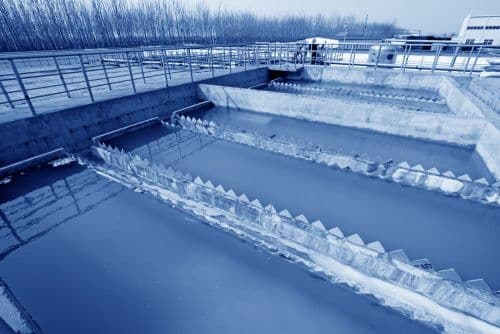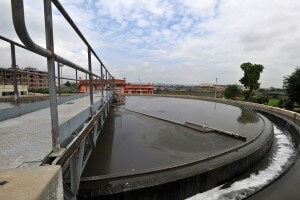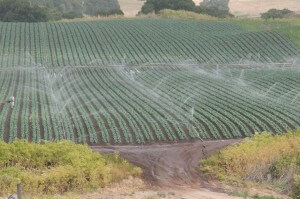Bacteria don't die on antibiotics, but the problem is that many times they don't die because of it. A committee of experts that convened recently proposed outlines for a wastewater treatment policy through which the resistant bacteria reach the fields and from there can also reach our dinner table

Once upon a time, everything was simple (and not pleasant at all): diseases like tuberculosis and pneumonia would in most cases end in a long hospital stay, and about half of the patients simply died because there was no real treatment for the disease. In 1928, penicillin was discovered, the first substance that succeeded in eliminating disease-causing bacteria (pathogens) such as the one that caused tuberculosis, and the widespread use of different types of antibiotics began.
But the joy was premature, and already a few years after the sensational discovery, evidence began to emerge that there are bacteria that have developed resistance to the antibiotic drugs, and they manage to survive the treatment and continue to thrive.
The problem with resistant bacteria is that they cause more severe and prolonged illnesses than those that antibiotics kill and require more aggressive treatment that endangers patients' lives. Many of them do not receive treatment that helps them, which causes economic damages such as lost working days and a decrease in the productivity of the economy, and providing treatment that costs very high.
Targeted elimination
Some numbers: treatment with simple antibiotics is quite cheap, and if a broad-spectrum antibiotic is needed that can deal with the bacteria that have become more violent, the price will increase tenfold or even more. A patient with salmonella, for example, will receive a few days' treatment with regular antibiotics. But if it doesn't work, he is already very weak from the disease, and now needs hospitalization, which costs about NIS 2,000 per day. In 2015, there were more than 4,000 people hospitalized in Israel because they had to receive aggressive treatment against antibiotic-resistant bacteria, and in total there were more than 64,000 days of hospitalization related to the matter. In recent years, patients with infections caused by antibiotic-resistant bacteria stay in the hospital between two and three weeks on average.
How did the bacteria develop resistance to the drug that is supposed to kill them? It's quite simple: the antibiotic has eliminated all the weak bacteria, and those that remain are those that have undergone mutations that allow them to stay alive in its presence. Or in other words - the use of antibiotics actually made the bacteria stronger, and every few years a new type of medicine has to be developed that they don't know yet.
What can be done about it? This is already a more complex question, and on February 9, 2016, a committee of experts convened, led by Dr. Zohar Barnet-Yitzhak (scientific advisor to the head of public health services), who discussed ways to deal with this problem in Israel. The event was attended by representatives of universities, government ministries (environmental protection , health, agriculture), hospitals, the Water Authority, the Volcanic Institute and the Health and Environment Foundation. Brent-Yitzhaki works at the Ministry of Agriculture as a fellow of the "Interface" program, a joint venture of the Society for Ecology and the Ministry of Environmental Protection, designed to train the future generation of scientists, who will establish the The use of scientific knowledge in the design of public policy with environmental aspects in Israel. The scientists integrate into the government offices in consulting positions and apply the scientific knowledge they have gained in the academy in the decision-making process at the executive level.
A paradise for resistant bacteria

The bacteria resistant to antibiotics like an aquatic environment, and there they thrive and meet more friends, and more antibiotics. Since the resistance trait is passed both in the form of inheritance between generations and between bacteria of different species (horizontal transfer of genes), the municipal sewage system is the perfect place to do this. The products are both resistant bacteria and resistance genes.
How do antibiotics get there? For example, from people who did not finish the dose prescribed by the doctor and they dispose of the drugs in the toilet, or from the sewage itself, especially sewage that comes from hospitals.
From here it only gets worse - the sewage treatment plants (STPs) fail to get rid of some of the bacteria and resistance genes, and all of these pass along with the wastewater that is used to irrigate agricultural fields throughout the country. From here to there, we all encounter these guys on and in our fruits and vegetables.
There are no magic solutions
Almost 530 million cubic meters of wastewater are produced in Israel each year, most of which undergoing purification and restoration for use as irrigation water. Since these days they are working to build another such purification plant, the amount of purified water that will reach the fields will increase even more.

Today there are several technologies with which it is possible to deal with the existence of antibiotic-resistant bacteria and the genes through which they develop resistance. One method is to add chlorine to the water, but it turned out that chlorine does not manage to treat all the problematic genes, but only some of them. There are other methods such as filtering the waste water with sand and gravel that absorb the bacteria, membrane filtration using dedicated filters, ozone treatment which is a toxic substance that kills the bacteria and the use of UV rays (ultraviolet frequency) that destroys their DNA.
Each of these technologies contributes to reducing their number, and it seems that using several methods - each of which has advantages - will give a better result, and together they have the potential to almost completely purify the water from bacteria and protect against antibiotic resistance. However, each method is expensive and requires infrastructure - the price of establishing a sewage treatment plant for 100,000 people, which cleans about 15,000 m50 per day, is about NIS XNUMX million. If you want to build a more sophisticated facility, the cost will increase accordingly.
"Although antibiotic resistance is A phenomenon recognized around the world, in no country does there exist an organized policy for the treatment of antibiotic-resistant genes in wastewater treatment facilities", concludes Dr. Brent-Yitzhaki. "This of course also applies to Israel. First of all, it is important to understand if the bacteria and the antibiotic resistance genes manage to survive on their way to our plate. Some researchers in Israel are leading global research in the field, but there are still significant gaps in knowledge. I believe that as a world leader in the use of wastewater in agriculture, it is important that Israel also leads the research and development of technologies to purify genes and resistant bacteria in the purification facilities."
The expert committee will formulate recommendations for additional steps that can be taken to address the issue of bacterial resistance to antibiotics and their presence in the effluent water that irrigates the fields in Israel. The conclusions will be compiled into a report and published later.
Keywords
http://www.shutterstock.com/pic-243088177/stock-photo-sewage-treatment-plant-closeup-in-an-industrial-enterprise-on-march-luannan-county-hebei.html?src=JOIr1vhxpQ6QS2vXt4pkCg-1-58

2 תגובות
Regarding the use of UV to destroy bacteria in wastewater. Isn't it better to use strong X-ray radiation? I see several advantages in X-ray, a: it is a stronger radiation that should be more lethal, b: it has the ability to penetrate water better, certainly if it is cloudy. I assume that a UV lamp placed over a tank at a depth of 2-3 meters will not kill bacteria in the depth of the tank. Therefore, the waste water must be flowed in a shallow place and then irradiated on it. To verify this, I don't think the X-ray has a problem penetrating several meters of water and remaining lethal. Do not forget that this is a higher intensity than a medical X-ray which is of minimal intensity.
One of the unmentioned causes of antibiotic resistance problems is the meat industries and in general animal agriculture. Due to the increase in density, massive use of antibiotics is required. Sometimes also excessive use, the cessation of use before slaughter (if at all this is done, many investigations have shown that there is really no strict adherence to this) only gives the bacteria a chance to adapt, and even then, antibiotics remain in a low amount that reaches the consumers, precisely the relatively low amount helps the bacteria in a person to get used without being destroyed. Apart from that, affluent bacteria reach humans in several ways from the meat industry. Usually not by eating the meat itself because meat is usually cooked which kills the bacteria. The bacteria pass through the workers in the industry (farmers butchers, etc..) during the preparation of fresh or thawed meat (there have even been deaths from contamination from the cut of a knife that cut meat) and another problem is that in the same kitchen food is prepared that is not cooked. Of course also the wastewater of the industry (farms, slaughterhouses, food factories). And another problem is the use of fertilizers for fertilization, often without any treatment. Therefore, many organic vegetables are contaminated with affluent bacteria.
And this is just one of the damages to the environment of the meat industry.
There is no way to grow the amount of meat that the western man consumes without amounts of antibiotics.